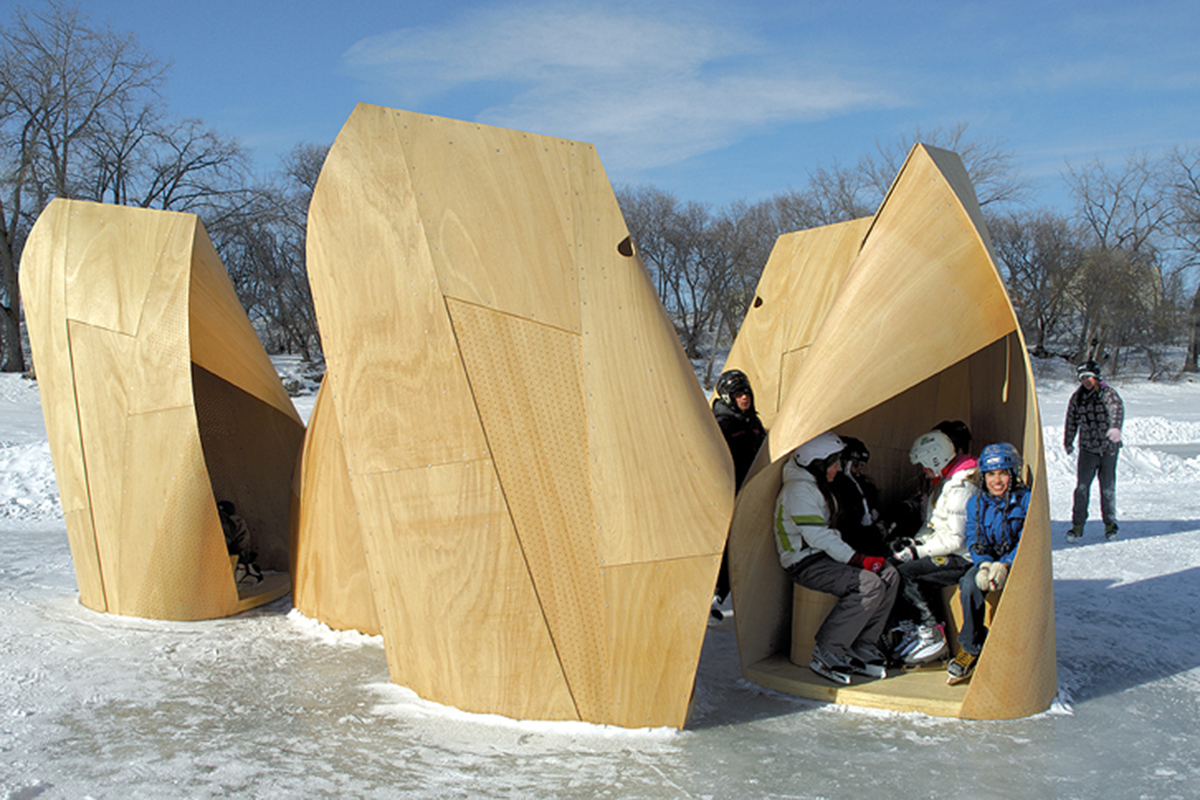Designed by Canadian firm Patkau Architects, these temporary structures which look like sculptural installations are a cluster of cone like structures, specially designed to provide shelter to the ice skaters from the harsh winds & temperature.
The wooden shelters are located in Winnipeg, Canada, a city in the Prairies known for its harsh winters which could last for over six months. So learning to celebrate winter – learning to take advantage of the opportunities that winter provides – makes sense.
The Red and the Assiniboine Rivers meet in the centre of the city, and in winter, when plowed of snow, skating trails many miles long are created. But with temperatures that drop to minus 30 and 40 for long periods of time, and winds that can make minus 30 feel like minus 50, creating opportunities to find shelter from the wind greatly enhances the ability to use the river skating trails.
Therefore, a program was developed to sponsor the design and construction of temporary shelters located along the skating trails. The proposal consists of a cluster of intimate shelters, each accommodating only a few people at a time. They are grouped in a small ‘village’ (or ‘herd’, or ‘school’, or ’flock’, or ‘flotilla’) to form a collective … of ‘something’ … irreducible to a single interpretation. They stand with their backs to the wind like buffalo, seeming to have life and purpose as they huddle together shielding each other from the elements.
Each shelter is formed of thin, flexible plywood which is given both structure and spatial character through bending/deformation. Skins, made of 2 layers of 3/16th inch thick flexible plywood, are cut in patterns and attached to a timber armature which consists of a triangular base, and wedge shaped spine and ridge members (the ridge is a line to negate the gravity loads of snow). Experiments in our workshop with a full-scale prototype mapped the stresses of bending. Stress points were relieved by a series of cuts and openings. The form of the shelter is a resultant of this process of stressing/deforming and then releasing stress.
Grouping the shelters into a cluster begins with the relationship of two, and their juxtaposition to qualify the size and accessibility of their entrance openings. This apparently casual pairing is actually achieved by a precise 120 degree rotation. Three pairs (one with mirror reflection) are then placed in relation to one another through a secondary rotation of 90 degrees to form the cluster and define an intermediate ‘interior’ space within the larger grouping. Together, the shelters create dynamic solar and wind relationships that shift according to specific orientation, time of day and environmental circumstance.
These are delicate and ‘alive’ structures. They move gently in the wind, creaking and swaying to and fro at various frequencies, floating precariously on the surface of the frozen river, shaking off any snow that might adhere to their surfaces. Their fragile and tenuous nature makes those sheltered by them supremely aware of the inevitability, ferocity and beauty of winter on the Canadian prairies.






